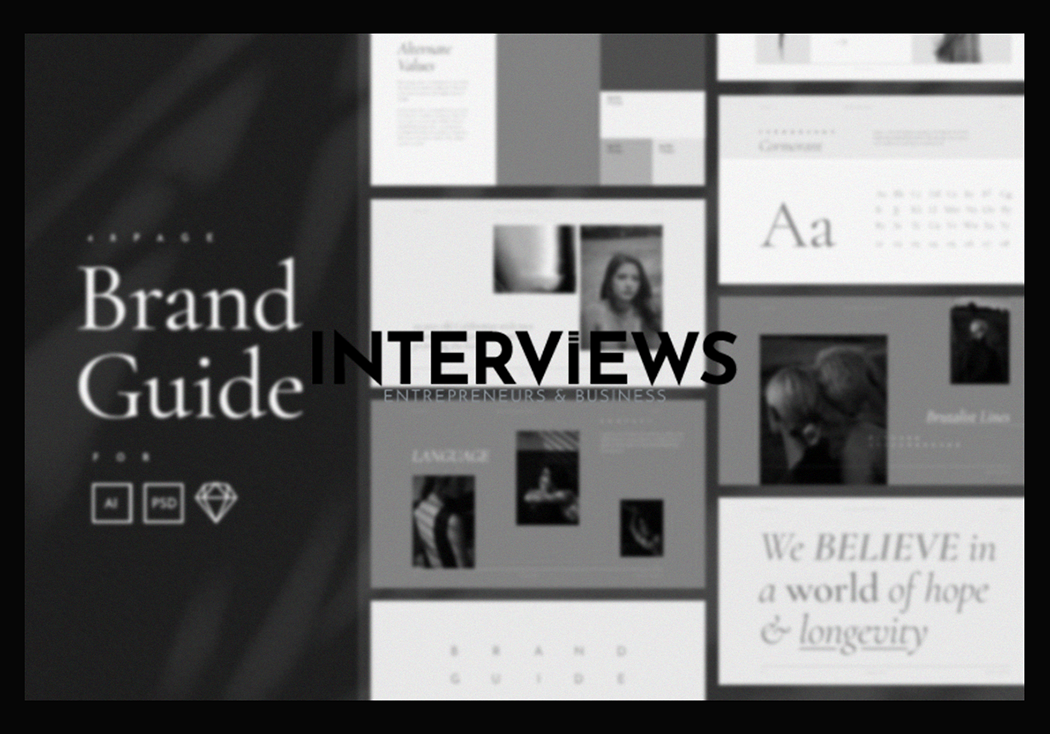So, You Want to Be the Next Coco Chanel? A Humorous (and Helpful) Guide to Starting a Clothing Brand
Do you dream of seeing your designs on runways or in closets? Starting a clothing brand seems glamorous. But it’s hard work. Spoiler: you might think, “Did I really think this through?” If it were easy, everyone would do it. Here’s your roadmap to fashion entrepreneurship. Consider it your survival kit, minus the Bear Grylls challenges (hopefully).
1. Initial Steps & Planning: More Than Just Doodling Pretty Dresses
Before sketching designs, focus on groundwork. This is the foundation of your fashion empire. You wouldn’t build a skyscraper on sand, right?
- Develop Fashion Design Skills: Not everyone is a prodigy with a needle. That’s okay! Still, you need design skills. Learn the basics. Understand silhouettes, fabrics, and the difference between a dart and a pleat. There are courses, online tutorials, and even old-fashioned books. Unless your brand is “effortlessly shapeless chic,” you need to know your stuff.
- Create a Clothing Business Plan: Yes, a business plan. Boring, we know. But it is your best friend in this venture. Think of it as your fashion GPS. Where are you heading? Who will buy? How will you earn money? A solid plan covers market analysis (who’s your competition?), your mission, and crucially, financial projections (because passion doesn’t cover bills).
- Define Your Brand (Mission, Vision, Values, Clothing Type): What’s your brand’s personality? Is it eco-conscious, edgy, minimalist, or flamboyant? Define your mission, vision, and values. What type of clothing will you offer? Knowing your brand is vital; it guides every decision.
- Conduct Market Research (Target Audience, Competition, Fashion Trends): Who are you dressing? Teens? Professionals? Eco-warriors? Know your audience like you know your best friend’s coffee order. Analyze competition – notice their strengths and weaknesses. Yes, you need to watch fashion trends. Are you riding the wave or forging your own path? Both can work.
- Develop a Marketing Strategy (Reaching Target Audience): How will people know you exist? Build it and they will not come, trust us. Social media is key (Instagram, TikTok, Pinterest – pick one). Consider online ads, perhaps some good PR. Identify where your audience hangs out online and offline.
- Create a Financial Plan (Startup Costs, Production, Revenue): Let’s talk money. How much to start? Include everything: design, production, marketing, website, legal matters. Estimate production costs (fabric, labor). Project revenue (how much can you realistically sell?). This isn’t just hope; it’s planning for profitability.
- Follow Fashion Trends: Stay updated. Fashion changes quickly. What’s hot today may be outdated tomorrow. Keep an eye on trends but don’t chase every fad. Integrate trends thoughtfully into your brand, or boldly ignore them if that fits your rebellious spirit.
- Build a Strong Brand: A strong brand is more than a logo; it’s an identity. It’s what people feel when they see your clothes. Create a connection with customers. Think of icons in fashion – consistency and a clear message define them.
- Define Your Niche (Style, Price Point, Customer Segment): Don’t try to appeal to everyone. Pick a niche. Are you high-end luxury or affordable streetwear? Define your style and price point. Specificity makes your brand stand out.
2. Design & Production: From Sketchbook to Real Clothes (Without the Sweatshop Drama)
Time to turn plans into clothes. This is where the magic and challenges happen.
- Design and Develop Your Clothing Line: Your creativity should shine now. Design your line and turn sketches into actual garments. Sketching, draping, and all those designer activities happen here. Design involves aesthetics and functionality.
- Learn Design Principles, Pattern Making, Garment Construction: Technical skills are key. Learn design principles (balance, proportion), pattern making (turning designs into templates), and garment construction (how clothes come together). You don’t need to be a tailor but understanding these basics helps.
- Develop Unique, Marketable Designs: Unique is important; marketable is essential. Your designs must reflect your brand’s identity and appeal to buyers. It requires balance.
- Source Fashion Fabrics: Fabric is key to clothing. Get high-quality materials matching your brand’s aesthetics. Will you use sustainable fabrics, luxury silks, or durable denim? Fabric choices impact cost, quality, and perception.
- Source Fashion Fabrics or Design Your Own: Generally, sourcing fabrics is smart. If adventurous (and equipped), consider designing textiles. This promotes branding and uniqueness.
- Set Up Production and Manufacturing: How will you make your clothes? Big decision here. Options include:
- In-House Production: Making clothes yourself or hiring a small team. Good for small batches or complete control.
- Outsourcing to a Manufacturer: Partner with factories for production. Common for larger quantities. Research ethical manufacturers to avoid scandals.
- Print-on-Demand: Use services that print designs on garments after orders come in. Ideal for starting small and low inventory risk but less control over quality.
- Build Pricing and Inventory Strategy: Pricing needs art and science. Include costs (materials, production) plus desired margin and competitor pricing. Create inventory strategy – how much stock? Limited runs, or continual availability? Finding balance is crucial.
3. Branding: More Than Just a Pretty Logo (Though a Pretty Logo Helps)
Branding builds connections with customers. It reflects personality and vibe.
- Create a Memorable Brand Name and Logo: Your name makes the first impression. Make it memorable and relatable. Your logo serves as visual shorthand, reflecting your brand identity.
- Develop a Strong Brand Identity (Style, Tone, Values): Your brand identity shapes perceptions. Define style (minimalist to maximalist), tone of voice (playful to serious), and values (sustainability included). Maintain consistency throughout.
- Color Palette, Font Style, Overall Aesthetic: These are your brand’s visual blocks. Develop a reflective color palette for mood. Choose a readable font style reflective of your personality.
- Build a Website and Social Media Presence: Today, if you’re not online, do you even exist? Create a website to showcase your collection and allow online purchases. Establish social media on platforms where your target audience resides.
- make them inviting.
4. Marketing & Sales: Getting Your Threads into People’s Hands (and Closets)
You have great clothes and a solid brand. How do you make sales? Marketing and sales are vital for your fashion business.
- Develop a Marketing Plan: Write down your strategies and tactics. This plan will help you reach customers. Decide which channels to use. Set your budget. Define your goals. Planning matters, especially when small.
- Promote Your Brand Online: The internet is your marketing space. Use social media for potential customer connections, share your story, and showcase your clothing. Email marketing nurtures leads and shares new collections. Explore online ads to extend your reach.
- Social Media: Use social media wisely. Instagram for photos, TikTok for short videos, Pinterest for boards – all have unique strengths. Build a community. Engage followers, run contests, and show your brand’s vibe.
- Email Marketing: Email is powerful. Build a list (offer incentives). Send newsletters featuring new arrivals, promotions, behind-the-scenes content, and stories. Email marketing is direct and personal.
- Online Advertising: Use paid ads to increase visibility. Target specific demographics and interests with social media ads. Capture people searching for clothing using search engine ads. Start small, track outcomes.
- Consider Partnerships and Collaborations: Work with other businesses or influencers. Partnerships grow your reach and audience. Cross-promotions, joint collections, or features can be effective.
- Sell Clothing Online or in Retail Stores: Where will you sell? Online through your site or marketplaces? Wholesale to boutiques? Think about pop-ups or your own retail store. Analyze pros and cons based on your brand and audience.
5. Financial Considerations & Costs: The Not-So-Glamorous But Absolutely Crucial Part
Let’s discuss money again. Understanding costs is vital for survival and profit.
- Startup Costs: Starting a clothing brand can cost thousands or tens of thousands. Online lines have lower costs ($5,800 – $17,000). Brick-and-mortar costs are high ($64,500 – $131,300). Independent labels can start around $10,000; major labels often exceed $500,000. Costs can range broadly from $500 to more than $10,000.
- Initial Costs Breakdown:
- Business Plan Development: Time has value. Hiring consultants costs money too. Factor in time value even if you do it yourself.
- Branding (Logo, Identity, Style): Design takes effort. DIY or hire professionals. Professional branding builds credibility.
- Design and Development (Software, Materials, Designer Hiring): Factor in design software fees, sample materials, and designer wages if hiring.
- Fabric and Textile Sourcing: Account for samples and sourcing trips.
- Manufacturing: Include setup costs, sampling fees, production per garment.
- Marketing and Sales (Website, Social Media, Advertising): Plan for website development costs, social media tools, and advertising plans.
- Legal and Administrative (Registration, Permits, Paperwork): Account for business registration fees, necessary permits, legal consultations, and trademark applications.
- Ongoing Costs:
- Inventory (Raw Materials, Finished Goods): Manage stock of fabrics and garments for cash flow.
- Production (Labor, Materials, Overhead): Include costs for each garment’s production – labor and materials add significant expenses.
- Shipping and Logistics: Include shipping to customers, packaging, and logistics software.
- Marketing and Advertising: Factor in ongoing campaigns and spend on advertising.
- Website Maintenance and Hosting: Plan for hosting fees, platform rates, maintenance costs, and security updates.
- Staff Salaries: For hires like designers or sales staff, include salaries in budgets.
- Rent and Utilities (if applicable): If renting a store, include related success expenses.
- Trademarking a Brand Name: Trademark costs exist. The basic application fee is around $350 per goods/services class. This investment protects your brand.
- Investment: Starting in some regions may cost between ₹5 lakh to ₹10 lakh (about $6,000 to $12,000 USD).
- Budget and Financing: Budgeting matters. Consider financing like small business loans or investors as needed.
- Precise Product Pricing: Price your items correctly for profit. Don’t guess; calculate costs and margins.
- Minimum Budget: No set minimum exists. It depends on the business model. Dropshipping lowers costs, while in-house production requires more capital.
6. Legal & Business Structure: Don’t Skip This, Unless You Enjoy Legal Nightmares
Legal issues are not exciting. However, they are essential. Avoiding them leads to problems or failure.
- Forming an LLC (Limited Liability Company): An LLC is not mandatory but is wise. It protects personal assets from liabilities.
- Liability Protection (Personal vs. Business Assets): Sole proprietorships risk personal assets if businesses face debts or lawsuits. An LLC separates personal finances from business risks, providing peace of mind.
- Professionalism and Credibility: An LLC gives a professional image to customers and investors, signaling business seriousness.
- Separation of Finances: An LLC helps maintain personal and business financial separation. This aids simple accounting and tax preparations.
- Tax Advantages: LLCs offer flexible taxation options. Choose pass-through taxation or S-corp/C-corp status for potential savings. Consult tax advisors for the best structure.
- Ease of Operations (Bank Account, Loans): LLCs simplify tasks like opening bank accounts or securing loans; lenders prefer registered businesses.
- Register Your Business: Officially register with authorities. Registration needs vary by location but often require naming the business and securing licenses.
- Obtain an EIN (Employer Identification Number): Get an EIN for tax purposes. It is essential to open bank accounts or hire employees.
- Create an Operating Agreement: Outline rules for your LLC. While not always legally required, it’s beneficial for multiple members to clarify roles.
- Open a Business Bank Account: Keep finances separate by opening a business account for clarity and professionalism.
- Trademarking Your Brand: Protect your name and logo by trademarks. Prevent use by others with similar names or logos. Trademarking requires:
- Conduct a Trademark Search: Check the USPTO database before applying for existing trademarks.
- Choose the Appropriate Trademark Class: Identify the correct category for your brand (class 25 is typical for clothing).
- Prepare and Submit the Trademark Application: File online through the TEAS system.
- Respond to USPTO Actions: Respond promptly to any objections raised during application review.
- Register and Maintain Your Trademark:If approved, maintain your new trademark.
-
- Maintain your trademark by using it in commerce. Renew it every 10 years. Renewals are needed between the 5th and 6th year after registration.
- Copyright Your Clothing Label?: You can’t copyright a brand name. You can trademark it. Copyright protects original artistic works, like designs on clothing. Trademark protects brand identifiers such as names and logos.
- Register Your Business Name: Register your business name with the relevant authorities. This may differ from trademarking your brand name. Business name registration usually occurs at the state or local level, while trademarks are federal.
- Legal Requirements: It is legal to label your clothing. However, comply with labeling requirements. These include fiber content, country of origin, and manufacturer identity. Federal law mandates these for most textile and wool products.
- Terms and Conditions: Develop clear terms and conditions for your online store. This includes shipping, returns, exchanges, privacy policy, and legal disclaimers. This protects both yourself and your customers.
7. Starting with No/Limited Experience: Fake It Till You Make It (Ethically, of Course)
Don’t let a lack of experience stop you. Many fashion entrepreneurs started with no industry experience. Here’s how to navigate learning.
- Develop a Business Plan: Yes, back to the business plan. It’s crucial when inexperienced. A strong plan gives direction and structure.
- Market Research: Conduct thorough market research. It helps you understand the landscape and identify opportunities, even without prior experience.
- Define Your Niche: Focus on a specific niche. This is smart for beginners. It allows you to become an expert and stand out.
- Brand Identity: Build a strong brand identity. This ensures your brand is cohesive and compelling, even if you’re learning.
- Financial Projections: Make realistic financial projections. This is vital for managing resources and making informed decisions when new to business.
- Design and Production: Even without design experience, you can launch a clothing line. Options include:
- Design (Freelance Designer, Online Platforms): Hire a freelance designer for your designs. Use online design platforms like Canva or Adobe Illustrator for simpler designs or marketing materials.
- Fabric Sourcing: Research fabric suppliers online. Attend fabric trade shows and order samples to assess quality.
- Production (Print-on-Demand, Dropshipping, Manufacturer): Begin with print-on-demand or dropshipping. This avoids inventory headaches. As you grow, explore partnering with a manufacturer.
- Online Presence & Marketing: Use online platforms for your e-commerce store and marketing. They are crucial for businesses of all sizes.
- E-commerce Platform: Use user-friendly e-commerce platforms like Shopify or Etsy to set up your online store. They handle tech, so you can focus on your brand.
- Social Media: Social media is essential when starting with limited experience. It’s free (initially), accessible, and effective for brand awareness.
- Marketing Strategy: Craft a simple marketing strategy focusing on social media, blogging, style guides, and affordable online ads.
- Legal and Financial: Seek basic legal and financial advice. Consult a lawyer or accountant to set up correctly and comply with regulations.
- Business Registration: Don’t skip business registration, even if small. It adds legitimacy and protects you legally.
- Pricing Strategy: Examine competitor pricing. Calculate your costs and determine a pricing strategy that is both profitable and competitive.
- Continuous Improvement: Learn as you go. The fashion industry is dynamic. Adopt a mindset of continuous improvement.
- Customer Feedback: Actively seek and respond to customer feedback. It’s crucial for improving your products.
- Stay Updated: Track fashion trends, marketing strategies, and industry news. Read blogs, attend webinars, follow influencers.
- Network: Connect with fashion entrepreneurs, designers, and industry professionals. Attend events or join online communities to network.
- Tips for Beginners:
- Start Small: Avoid financial or operational overextension at the start. Begin with a limited product line and scale as you gain experience.
- Focus on Quality: Prioritize quality materials and craftsmanship, even with higher costs. Quality builds customer loyalty.
- Be Patient: Building a successful clothing line takes time and effort. Do not be discouraged by setbacks. It is a marathon, not a sprint.
- Learn from Others: Study successful clothing brands both big and small. Analyze what makes them stand out. Learn from their successes and mistakes.
8. Starting with Limited/No Money: Fashion on a Shoestring (Stylish and Savvy)
Tight budget? No problem. You can launch a clothing brand with no or limited money. This requires creativity and resourcefulness.
- Low-Cost Strategies: Focus on strategies that minimize upfront expenses. Dropshipping, print-on-demand, and a strong online presence are your allies when funds are tight.
- Dropshipping: Ideal for starting with no money. You do not buy or hold any inventory. Partner with a supplier who manages production, storage, shipping. Focus on marketing and sales.
- Print-on-Demand: A great low-cost option. You design graphics, and a service prints them on clothing as customers order. No upfront costs or risk involved.
- Building a Strong Online Presence: Your online presence acts as your storefront when starting on a budget. Build it by:
- Social Media: Free marketing gold. Use Instagram, TikTok, Facebook, Pinterest to showcase your brand, connect with potential customers, build community.
- Marketing: Utilize low-cost marketing methods like blogging, creating style guides, videos, email marketing, and collaborations with micro-influencers.
- Research and Planning: Invest time in thorough research. Good planning saves money by avoiding costly mistakes.
- Low-Cost Production Methods: Dropshipping and print-on-demand minimize costs to produce products initially. If desired, explore ethical manufacturers later in regions with lower labor costs.
- A Strong Online Presence (Again!): Focus on building an online presence. A well-designed website (even basic), active social profiles, and engaging content are key when funds are limited.
- Marketing and Sales (Focus on Free/Low-Cost): Emphasize free marketing tactics like social media campaigns, content marketing, email marketing, word-of-mouth.
- Legal Considerations: Legal costs can be challenging. Bootstrapping legal aspects at first is wise. Use online resources for basic legal guidance and delay expensive actions like trademarking until revenue increases.
9. Important Tips: Nuggets of Wisdom (Don’t Say We Didn’t Warn You)
Here are some essential pieces of advice for your fashion brand journey.
- Start Small: Launch with a small collection. Avoid launching a massive line immediately. Scale gradually as your business develops.
- Focus on Quality: Choose quality over quantity. Invest in high-quality materials and manufacturing even if it means fewer items at the start.
- Build a Strong Brand Identity: Create a memorable brand that resonates with your target audience. Your brand identity sets you apart and attracts loyalty.
- Leverage Social Media: Use social media strategically to build community, promote your brand, engage customers, drive sales.
- Avoid Hesitation in Asking for Help: Seek advice from mentors or industry experts. Networking can save time, money, frustration.
- Pricing Your Garments:Pricing matters significantly. Carefully calculate costs, research competitor prices, consider brand position when setting prices.
- Remain Consistent: Ensure consistency across all brand touchpoints: website, social media, customer service, packaging, product quality. Consistency builds recognition and trust.
10. Other Considerations: The Random But Important Stuff
An additional list of considerations for you to ponder on your journey in fashion branding. about that might not fit neatly into the other categories, but are still worth knowing.
- Labeling Clothes: Labels are necessary. The cheapest option is a dark permanent marker for personal use. For your brand, choose woven or printed labels for professionalism.
- Fiber Content, Country of Origin, Manufacturer Identity: Federal law mandates labels for most textile products. These labels must show fiber content (100% cotton, 50% polyester/50% cotton), country of origin, and manufacturer identity (brand name or RN number). Follow these regulations to prevent legal trouble.
- Profitability: Clothing brand owner salaries vary. Top earners make $242,000 annually. The average salary is around $86,000. Early-stage owners may earn much less. Clothing retail profit margins usually range from 40% to 60%, while high-end boutiques often profit more.
- Profitable Niches: Look into profitable niches. Reselling vintage or second-hand clothing can be lucrative. Niche markets, such as chef jackets, can attract loyal customers. Custom print-on-demand apparel is another good opportunity.
- Protecting Your Brand: Protect your brand and designs carefully.
- Business Structure: Choose a solid legal structure (e.g. LLC) for asset protection.
- Legal Considerations: Register your brand name and trademark to secure your intellectual property.
- Trademark vs. Copyright vs. Patent: Know the distinctions. Trademark safeguards brand names and logos. Copyright protects original artistic works like designs. Patents protect unique product designs for limited time. Names are not copyrightable; trademarking is necessary.
- Choosing a Business Name: Pick a unique business name that is available. Check state and federal databases to confirm its use.
- Protect Your Business Moniker (Trademark the Name): Trademark your brand name. Logos may change, but your brand name is key. Register a character mark to safeguard the name itself. Trademarking your clothing brand name is a must.
- Create Engaging Content: Develop content that represents your brand’s story, products, and values to attract customers.
- Build a Community: Leverage social media to form a community for your brand. Loyal communities help drive sales and offer valuable feedback.
- Minimum Investment (Revisited): Starting a clothing brand needs a minimum budget. It varies based on your strategy, but dropshipping and print-on-demand approaches allow for a lean start.
There it is. Your quick guide to launching a clothing brand. It takes time and effort. Expect hard work, learning, and challenges (fabric shortages happen). With passion, planning, and humor, you may build the next big brand. Now go create (and maybe grab coffee – you will need it).





